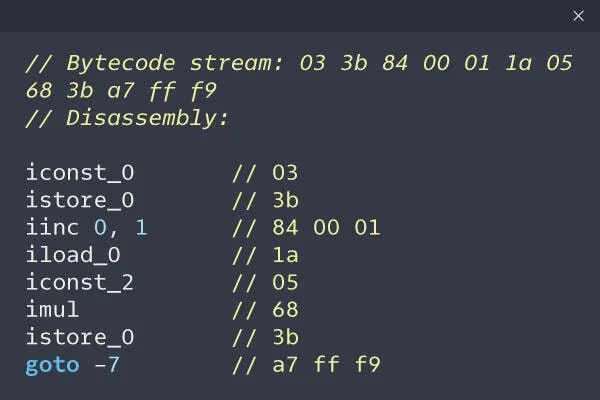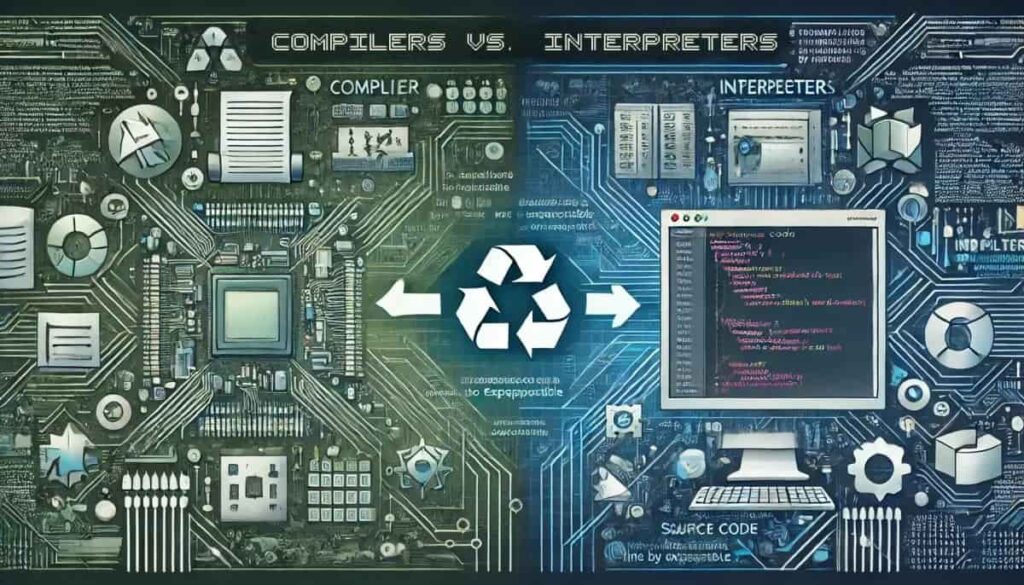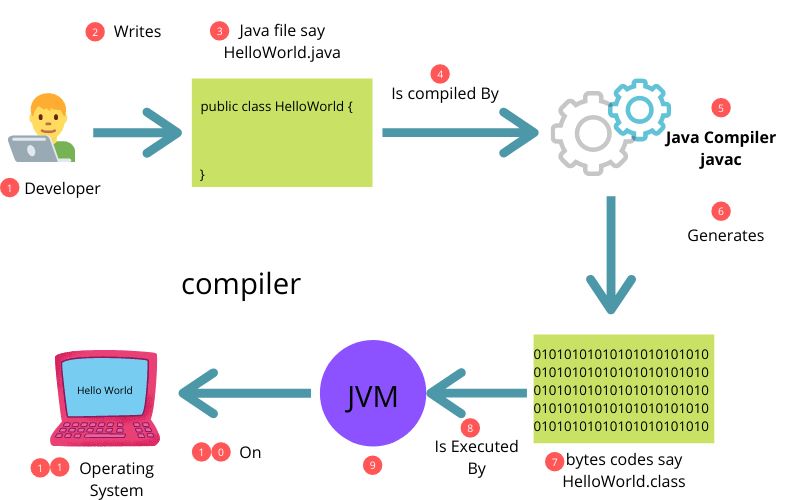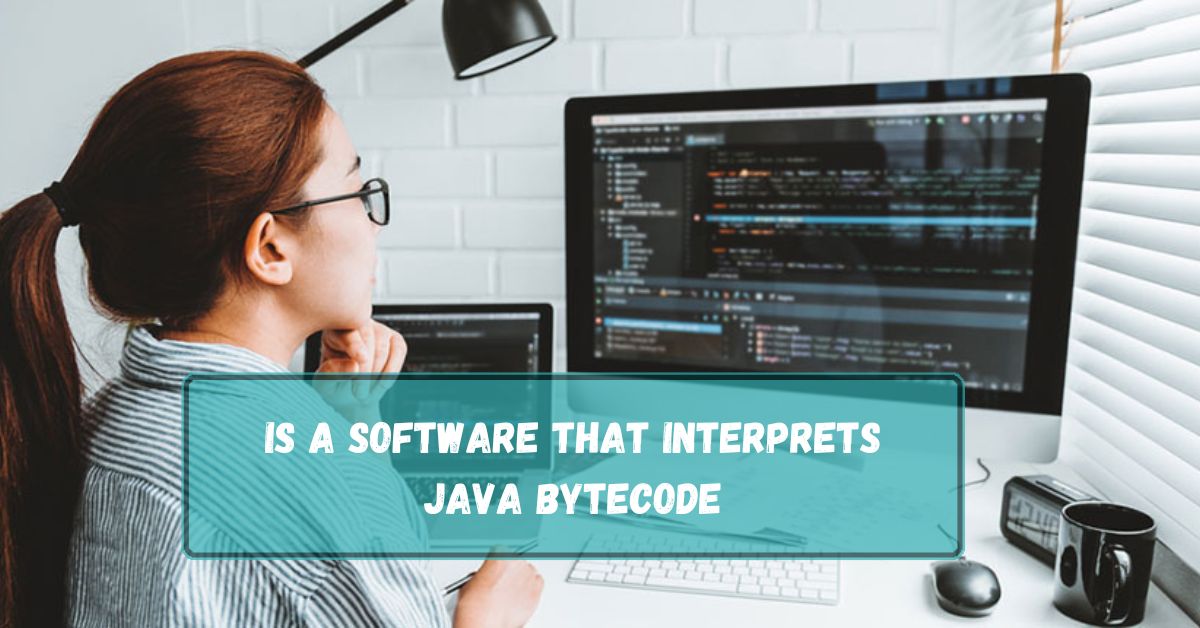Java bytecode is an intermediate code that Java programs use. Instead of being compiled directly into machine code, Java is first translated into bytecode, which runs on the Java Virtual Machine (JVM). This makes Java highly portable and compatible with multiple platforms.
Yes, software that interprets Java bytecode is called a Java Virtual Machine (JVM). The JVM executes the bytecode generated by the Java compiler, allowing Java programs to run on any platform that has a compatible JVM.
In this article, we will discuss “Is A Software That Interprets Java Bytecode”.
Table of Contents
What Is Bytecode In Java?
1. Definition Of Bytecode:
Bytecode is an intermediate representation of your Java code. The source code is converted into bytecode after you write and compile a Java program. This bytecode is not machine code but a code that can be understood by the Java Virtual Machine (JVM).
2. Why Java Uses Bytecode?
Java uses bytecode to ensure platform independence. Bytecode can run on any JVM device, regardless of the underlying operating system. This allows Java programs to be highly portable.
How Java Bytecode Works?

1. Java Compiler And Bytecode Generation:
When you write Java code and compile it, the Java Compiler converts the human-readable code into bytecode. This bytecode is stored in .class files.
2. Bytecode Structure:
Bytecode consists of a series of instructions that the JVM can interpret. It includes stack operations, method invocations, and object creation.
Java Virtual Machine (JVM):
1. Role Of JVM In Bytecode Interpretation:
The JVM is the core component that executes bytecode. It acts as an interpreter, reading and translating bytecode into machine code that the host system understands.
2. How JVM Executes Bytecode?
- The JVM follows a cycle: it loads the bytecode, verifies its correctness, and executes it. This process happens in real-time, making the JVM a crucial part of Java’s platform independence.
Types Of Bytecode Interpreters:
1. Just-In-Time (JIT) Compiler:
The JIT compiler is part of the JVM that optimizes bytecode execution. It converts frequently used bytecode into machine code during runtime to improve performance.
2. Ahead-Of-Time (AOT) Compiler:
Unlike JIT, the AOT compiler compiles bytecode into machine code before runtime. It is less common but can offer faster startup times.
Difference Between Bytecode And Machine Code:
1. Platform Independence:
Machine code is specific to a particular hardware platform, while bytecode is platform-independent. The JVM makes sure that the bytecode is executed on any system.
2. Performance Considerations:
While bytecode offers flexibility, machine code is faster. However, optimizations like JIT can bridge this performance gap.
Importance Of Bytecode In Cross-Platform Functionality:
Java bytecode enables developers to write code once and run it on any system with a JVM. This cross-platform capability is one of the main reasons Java is so popular for enterprise applications.
How Bytecode Enhances Security In Java?
Bytecode is verified before execution to ensure that it does not violate Java’s security rules. The JVM checks for things like illegal memory access, making Java applications more secure.
The Role Of Class Loaders In Java:
1. What Is A ClassLoader?
A class loader in Java is responsible for loading class files (bytecode) into the JVM at runtime. It’s an important part of how Java handles bytecode.
2. How do Class Loaders Work With Bytecode?
Class loaders load bytecode into memory so the JVM can execute it. This dynamic loading ensures that classes are loaded only when needed, improving performance.
The Evolution Of Java Bytecode Interpreters:

1. Early Versions Of JVM:
The first versions of JVM were simple and not very optimized. Bytecode was interpreted line by line, making execution slower.
2. Modern Bytecode Interpreters:
Modern JVMs come with JIT and other optimizations that make bytecode execution much faster than before. This has significantly improved the performance of Java applications.
Advantages Of Bytecode Interpretation:
1. Platform Independence:
One of the biggest advantages of bytecode is its platform independence. It allows Java programs to run on any system with a JVM.
2. Speed Of Execution:
With optimizations like JIT, bytecode execution is much faster than in the early days of Java. This makes Java suitable for high-performance applications.
Challenges In Bytecode Interpretation:
1. Performance Overheads:
While bytecode is portable, it can have performance overheads compared to directly executed machine code. However, JVM optimizations minimize these overheads.
2. Security Concerns:
Although bytecode is verified for security, vulnerabilities can still be exploited if the bytecode or JVM is not properly secured.
Comparison Of Java Bytecode With Other Programming Languages:
Java is not the only language that uses bytecode. Languages like Python also use an intermediate representation. However, Java’s JVM is more widely used and optimized.
Which Is The Interpreter For Bytecode?
The interpreter for bytecode is usually a virtual machine (VM). For example, the Java Virtual Machine (JVM) runs Java bytecode. It reads and executes the bytecode instructions on the specific computer platform.
What Is Java Bytecode Called?
Java bytecode is simply called bytecode. It is a special form of code that the Java compiler creates. The Java Virtual Machine (JVM) reads and runs this bytecode on any computer, making Java platform-independent.
What Interprets Java’s Byte Code?
Java’s bytecode is interpreted by the Java Virtual Machine (JVM). The JVM reads the bytecode and translates it into machine code, allowing Java programs to run on different devices without needing to rewrite the code.
What Translates A Java Program Into Bytecode?
The Java compiler translates a Java program into bytecode. It takes the code written by the programmer and converts it into a format called bytecode, which the Java Virtual Machine (JVM) can read and execute.
Which Command Is Used To Interpret And Run The Java Bytecode?
The Java command is used to interpret and run Java bytecode. After compiling a Java program into bytecode, you can run it by typing `java` followed by the class name in the command line.
Is A Software That Interprets Java Bytecode?
Yes, the Java Virtual Machine (JVM) is the software that interprets Java bytecode. It reads and runs the bytecode, allowing Java programs to work on different platforms without needing changes to the code.
What Is The Software That Executes Compiled Java Codes?
The Java Virtual Machine (JVM) is the software that executes compiled Java codes. It reads the bytecode generated by the Java compiler and runs it on any platform, making Java programs platform-independent.
Java Compiler Translates Java Source Code Into:

The Java compiler translates Java source code into bytecode. This bytecode is a platform-independent format that can be executed by the Java Virtual Machine (JVM) on any device, allowing Java programs to run anywhere.
Where Is The Java Source Code Compiled Into?
Java source code is compiled into bytecode by the Java compiler. This bytecode is stored in .class files and can be executed by the Java Virtual Machine (JVM) on different platforms.
Which Is The Best Compiler For Java?
The Oracle JDK compiler(Javac) is widely considered the best for Java. It is the official Java compiler provided by Oracle and is used for compiling Java source code into bytecode.
Is Java A Compiled Or An Interpreted Programming Language?
Java is both compiled and interpreted. Java source code is compiled into bytecode by the Java compiler. Then, the Java Virtual Machine (JVM) interprets and runs this bytecode on different platforms.
FAQs:
1. What Is Java Bytecode?
Java bytecode is an intermediate representation of your Java code that can be executed on any system with a JVM.
2. Why Is Bytecode Important In Java?
Bytecode allows Java programs to run on any platform, making them highly portable.
3. What Is The Role Of Jvm In Bytecode Execution?
The JVM interprets bytecode and converts it into machine code for execution on the host system.
4. What Is The Difference Between JIT And Aot Compilers?
JIT compiles bytecode at runtime, while AOT compiles it before runtime.
5. How Does Bytecode Improve Java Security?
Bytecode is verified by the JVM before execution to prevent security vulnerabilities.
Conclusion:
In conclusion, Java bytecode is a platform-independent intermediate code that allows Java programs to run on any device with a JVM. The Java Virtual Machine (JVM) interprets this bytecode, ensuring portability, security, and performance across different platforms, making Java highly versatile.
